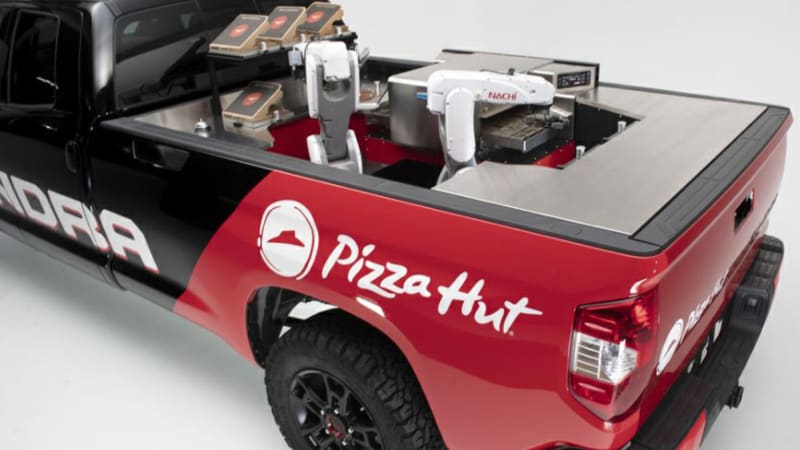https://www.autoblog.com/2018/10/30/toyota-pizza-hut-pie-pro-truck-oven-sema/

If you can’t bring more customers to your pizza oven, bring more pizza ovens to your customers. That seems to be the idea behind Pizza Hut’s Pie Pro, a
with an automated robotic pizza oven mounted in the pickup truck bed. The truck is currently on display at
.
Nicolas Burquier, Pizza Hut’s chief customer and operations officer in the U.S., said in
with
Bloomberg
, “We are pretty obsessed with improving the customer experience. The more we can get closer to their homes or the point of delivery, the better and hotter the product will be.”
Now, it’s important to note that the word autonomy is being bandied about in stories covering this pizza truck, which makes sense since the two companies are indeed
. That’s referring to the process of heating up a pizza; the Toyota Tundra that forms the basis of the machine is driven by a human being. It is a zero-emission vehicle, though. It’s gasoline-burning engine was yanked and replaced with the guts of a
hydrogen
car, so the only thing emitted from this truck’s tailpipe is water.
As for the pizzas in the bed, those are stored in a refrigerator until needed, at which time a robotic arm will transfer a pie from the cooler to ventless conveyer oven.
According to The Verge
, the entire process takes six to seven minutes, and it all takes place right at the customer’s home to ensure the pizza is as hot and fresh as possible.
There’s not timetable as to when you might see an pickup-mounted automated pizza oven on a public road near you. We wouldn’t hold our breath. That said, food delivery is one arena where self-driven vehicles could potentially make a splash.
Related Video:
via Autoblog http://www.autoblog.com
October 30, 2018 at 12:29PM


